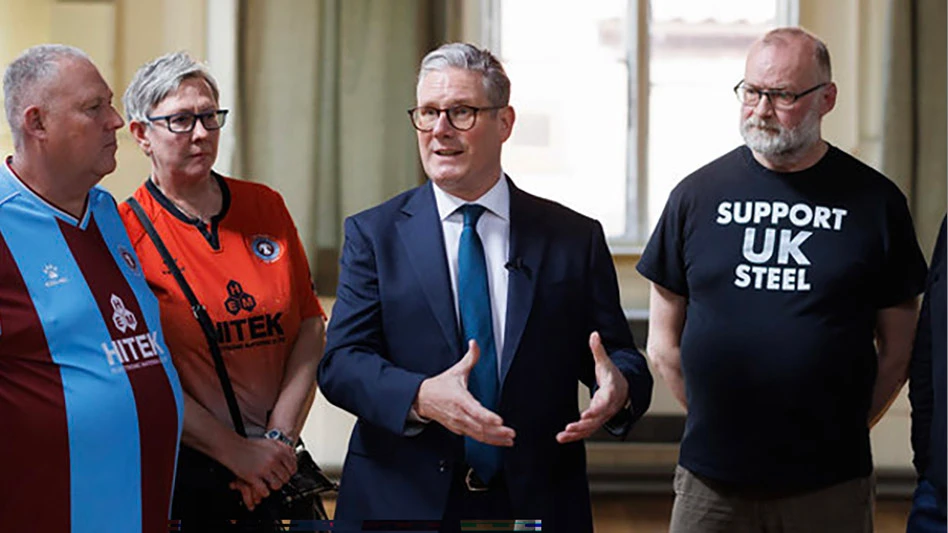
Photo by Mark Campbell Productions
Since the initial adoption of extended producer responsibility (EPR) for packaging in Germany in 1991, the policy approach has garnered growing interest from U.S. state legislatures.
With the goal of shifting the financial burden of recycling away from taxpayers to producers and consumers of products, the method has gained traction within a growing number of states as a means to encourage more sustainable packaging design and to increase recycling rates.
Currently, four states (Maine, Oregon, Colorado and California) have passed EPR bills, and 17 states (including Illinois, Washington, New York, Virginia, Vermont and North Carolina) have proposed their own EPR bills for packaging in the past two years.
The scope of these bills varies greatly by state. Factors such as producer authority, recycling rate targets and recycled content mandates have taken on different forms in those states that have EPR laws, leaving recyclers and stakeholders curious about the policy’s overall effect on the industry and its processes.
At this year’s Paper & Plastics Recycling Conference (PPRC), which took place Oct. 19-20 in Chicago, panelists on the session titled “EPR & Sustainable Packaging Part 1” addressed some of these looming questions and what the industry can expect as new EPR legislation gets proposed.
Who’s in charge?
A common theme among EPR strategy discussions is the question of who’s controlling the system. Thus far, some discrepancies have arisen in the EPR legislation that has passed in the U.S., primarily regarding the role of government versus private industry in funding.
In California, S.B. 54—which creates a producer responsibility organization (PRO) to run the statewide collection and recycling program—was signed into law June 30. Just over a year earlier, however, Maine took a different approach with its EPR bill.
In August 2021, Maine became the first state to sign EPR legislation into law with the passage of L.D. 1541. As previously reported by Recycling Today, the bill requires producers of packaged goods sold in the state to finance the maintenance and expansion of municipal recycling programs.
While the main intent of the bill is similar to California's and others', the key difference is how the programs are managed and paid for.
Under L.D. 1541, the state Department of Environmental Protection sets the fee schedule based on collection and processing costs. Meanwhile, in states like California and Colorado, budgets and regulatory requirements are determined by a stewardship organization, or PRO.
When asked whether there was a preference for PROs over government-led EPR, the panel—consisting of Dan Felton, executive director for Ameripen, St. Paul, Minnesota; Megan Daum, vice president of sustainability at the American Beverage Association, Washington; and Nicole Willett, vice president of resource recovery at GFL Environmental, Vaughan, Ontario—largely agreed that producer-controlled systems were ideal.
“We feel it should be a producer-controlled system, meaning those who are paying into the system are the ones managing and controlling it,” Felton said. “Maine is an example where the producers will not be running the program; the state will be running the program under a single 10-year RFP (request for proposal), so the producers will have little say in the process.
“I think it’s important that other stakeholders have a seat at the table, whether it’s on the board itself or in advisory councils and committees. That’s a key element—that we have the producers intimately involved in the process,” he added.
Daum agreed, noting that a producer-controlled system “links accountability with responsibility under the law.” She added that by shifting the financial onus of recycling from taxpayers and municipalities to producers, it would encourage producers to optimize existing systems.
“We have these highly dependent but very disconnected [recycling] systems; being able to [take a] 30,000-foot [view] allows us to … disrupt what isn’t working and look holistically to make sense of that,” she said.
What’s the main goal?
From the recycler's perspective, Willet said GFL doesn’t have a solid position for either model but believes all sides can agree that the goal is to increase recycling rates.
“I don’t think anyone wants to see recycling rates go backward,” she said. “I don’t think the intent of EPR legislation is that we go backward on recycling and that we have less postconsumer recycled content available in the marketplace—I think it’s that we move forward.”
Sponsored Content
Redefining Wire Processing Standards
In nonferrous wire and cable processing, SWEED balances proven performance with ongoing innovation. From standard systems to tailored solutions, we focus on efficient recovery and practical design. By continually refining our equipment and introducing new technology, we quietly shape the industry—one advancement at a time.
Willet further explained that EPR can offer an opportunity for harmony within the industry.
“Different municipalities have different acceptable materials, different processes and different materials, and consumers don’t know what to put in the blue box or blue bin,” she said. “So, I think good EPR legislation gives us clarity, and that clarity is through a harmonized basket of goods.”
While some argue the legislation is aimed toward requiring producers to pay for end-of-life, Daum explained it’s more so about incentivizing decisions about packaging.
Willet agreed, saying, “EPR gives the ability to redesign packaging to increase recycling rates. A lot of materials are difficult to process or have no end market—EPR can help change packaging [design] to make things easier to recycle.”
Get curated news on YOUR industry.
Enter your email to receive our newsletters.
Latest from Recycling Today
- Steel Dynamics nets $217 million on record shipments
- Massive Chinese steelmaking rebound recorded in March
- LME looks into sustainable metal pricing
- OnePlanet Solar Recycling closes $7M seed financing round
- AMCS launches AMCS Platform Spring 2025 update
- Cyclic Materials to build rare earth recycling facility in Mesa, Arizona
- Ecobat’s Seculene product earns recognition for flame-retardant properties
- IWS’ newest MRF is part of its broader strategy to modernize waste management infrastructure









